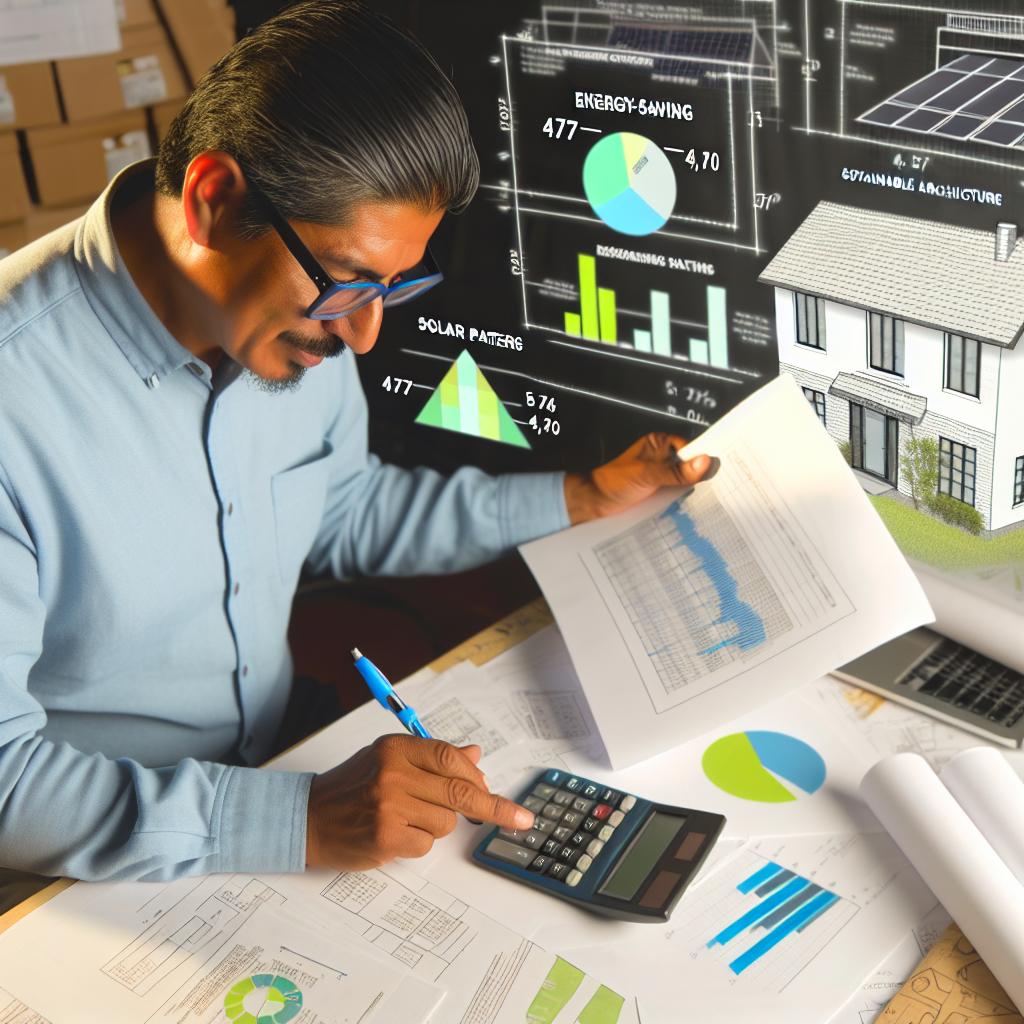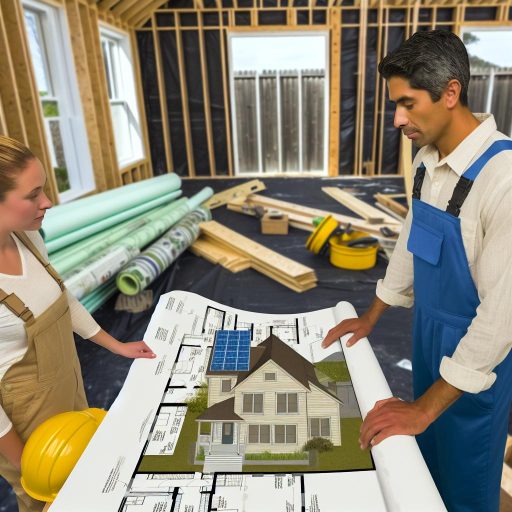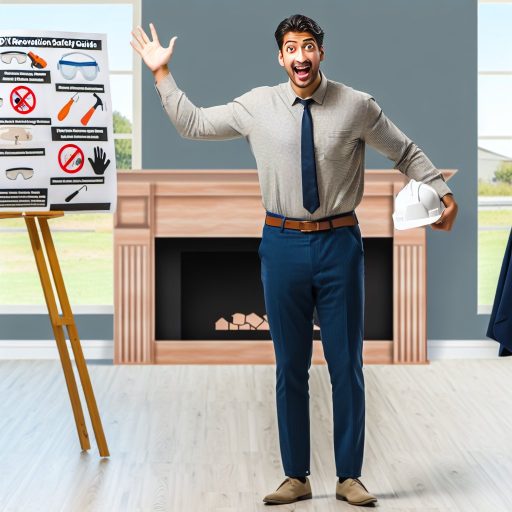Introduction to Energy-Efficient Homes and Their Benefits
Energy-efficient homes utilize design and technology to reduce energy consumption.
They promote sustainability while offering financial savings over time.
Homeowners enjoy lower utility bills as a direct result of efficient systems.
These homes also contribute positively to the environment by reducing greenhouse gas emissions.
Additionally, energy-efficient homes often have higher resale values in the real estate market.
Understanding Energy Efficiency
Energy efficiency involves using less energy to provide the same service.
This approach includes upgrading insulation, windows, and appliances.
Home automation systems can also enhance efficiency by optimizing energy use.
By implementing these changes, homeowners can significantly reduce wastage.
Financial Benefits of Energy Efficiency
Initial investments in energy-efficient improvements lead to long-term savings.
A well-insulated home can save a homeowner up to 30% on heating and cooling costs.
Furthermore, many regions offer incentives, rebates, or tax breaks for energy-efficient renovations.
Investing in efficiency can even qualify homeowners for low-interest loans.
Environmental Impact
Energy-efficient homes play a vital role in reducing overall energy demand.
This reduction decreases the reliance on fossil fuels and lowers emissions.
As a result, these homes support efforts to combat climate change.
Supporting energy efficiency contributes to cleaner air and improved public health.
Long-term Value
Energy-efficient homes tend to retain their value better than conventional homes.
They are attractive to environmentally-conscious buyers in today’s market.
Furthermore, homeowners benefit from reduced maintenance costs over time.
In many cases, these homes come with warranties for energy-efficient systems.
Overview of Renovation Cost Factors for Energy Efficiency
Initial Assessment and Planning
Begin with a thorough assessment of your home’s current energy efficiency.
This evaluation identifies essential upgrades and repairs needed.
Consult professionals, like energy auditors, to gain insights.
They can provide an accurate analysis of energy performance.
Material Choices
Selecting high-quality materials impacts renovation costs significantly.
Energy-efficient windows, insulation, and doors often come with a higher price tag.
Consider the long-term savings these materials provide on energy bills.
Research local suppliers for competitive pricing on sustainable materials.
Labor Expenses
Qualified labor is crucial for successful renovations.
Expert contractors might charge premium rates for specialized skills.
Evaluate different contractors’ quotes before making a decision.
Always check reviews and ask for references for reliability.
Permitting and Compliance Costs
Certain renovations require permits, adding to the overall cost.
Familiarize yourself with local regulations and necessary permits.
Consult local authorities or a contractor about compliance issues.
This can prevent potential fines or retrofitting down the line.
Return on Investment (ROI)
Invest in renovations that maximize energy efficiency for better ROI.
Some upgrades, like solar panels, may offer tax incentives.
Understand which improvements yield the highest savings over time.
Compile data to make informed decisions on energy-efficient renovations.
Understanding Different Types of Energy-Efficient Upgrades
Insulation Improvements
Upgrading insulation is crucial for energy efficiency.
It reduces heat loss in winter and keeps homes cool in summer.
Common materials include fiberglass, foam boards, and cellulose.
Effective insulation can significantly lower energy bills.
Families can benefit from increased comfort throughout the year.
Energy-Efficient Windows
Energy-efficient windows can drastically improve thermal performance.
Double or triple-pane glass provides better insulation than single-pane.
Low-emissivity (Low-E) coatings reflect heat while allowing light in.
Proper installation is essential to ensure maximum efficiency.
Upgrading windows not only saves energy but also enhances curb appeal.
Heating and Cooling Systems
Modern heating and cooling systems are designed for efficiency.
High-efficiency furnaces and air conditioning units consume less energy.
Consider installing programmable thermostats for better temperature control.
Regular maintenance prolongs the lifespan of these systems.
Efficient systems often qualify for rebates, enhancing affordability.
Renewable Energy Solutions
Solar panels are a popular choice for sustainable energy generation.
They can drastically reduce reliance on traditional power sources.
Wind turbines are another innovative option for energy-minded homeowners.
These installations often come with tax incentives that lower overall costs.
Investing in renewable energy not only saves money but helps the environment.
Energy-Efficient Appliances
Replacing old appliances with Energy Star-rated models pays off over time.
These products consume less electricity and water.
Look for refrigerators, washing machines, and dishwashers that meet efficiency standards.
Modern appliances often come with advanced features that save time and energy.
Choosing smarter appliances can lead to significant long-term savings.
Discover More: Renovation Cost Estimation for Garage Conversions
Estimating Costs: Energy Audits and Initial Assessments
Importance of Energy Audits
Energy audits provide a comprehensive overview of a home’s energy efficiency.
They identify areas needing improvement to reduce energy consumption.
By identifying inefficiencies, homeowners can save significantly on utility bills.
Energy auditors can recommend solutions tailored to the specific home.
Choosing a Qualified Energy Auditor
Selecting a qualified energy auditor is crucial for accurate assessments.
Look for professionals with certifications from recognized organizations.
These credentials ensure they have the necessary training and expertise.
Ask for recommendations from friends or family to find reliable auditors.
Cost of Energy Audits
Energy audit costs vary based on the home’s size and location.
On average, homeowners spend between $200 and $600 on an audit.
Some utility companies offer incentives or rebates for energy audits.
Research local programs to potentially offset these costs.
Initial Assessments: What to Expect
An initial assessment often includes a visual inspection of the property.
Auditors will evaluate insulation, windows, and HVAC systems.
They will also use specialized tools for energy testing.
This includes blower door tests to check for air leaks.
Interpreting Audit Results
After the audit, expect a detailed report with findings.
The report will highlight key areas for improvement.
It will also provide estimated costs for recommended upgrades.
Analyze these findings carefully to make informed decisions.
Planning Your Renovation Budget
Use audit results to create a realistic renovation budget.
Prioritize actions based on cost-effectiveness and urgency.
Include costs for materials, labor, and any potential permits.
Consider energy-saving upgrades that could offer long-term savings.
You Might Also Like: Renovation Cost Estimation for Multi-Family Properties
Key Renovation Projects
Insulation
Effective insulation improves energy efficiency in homes.
It reduces heating and cooling costs significantly.
Adding insulation to attics and walls is essential.
Consider using fiberglass or spray foam options.
Homeowners can expect a return on their investment.
Windows
Upgrading windows enhances comfort and efficiency.
Energy-efficient windows minimize heat loss during winter.
They also reduce heat gain in the summer months.
Look for double or triple-pane windows with low-E coatings.
Proper installation is crucial for maximum benefit.
HVAC Systems
Modern HVAC systems operate more efficiently than older models.
Regular maintenance ensures optimal performance over time.
Consider installing a programmable thermostat to save energy.
Air quality improvements can be achieved with proper filtration systems.
Be mindful of the size of your system; bigger isn’t always better.
Discover More: Renovation Cost Estimation for Aging-in-Place Upgrades
Government Incentives and Rebates for Energy-Efficient Renovations
Overview of Government Programs
Various government programs promote energy-efficient renovations.
These initiatives often include financial incentives for homeowners.
Local, state, and federal programs offer a range of benefits.
They aim to reduce energy consumption and promote sustainability.
Types of Incentives Available
Homeowners can access several types of incentives.
- Tax credits help reduce the total cost of renovations.
- Grants provide upfront cash for specific energy-efficient projects.
- Low-interest loans make financing affordable.
- Rebates offer cash back after project completion.
Eligibility Requirements
Eligibility varies depending on the program and location.
Typically, homeowners must meet specific energy-efficiency guidelines.
For example, renovations may have to meet specific energy ratings.
Moreover, some programs cater to low-income households.
These programs ensure that assistance reaches those who need it most.
How to Apply for Incentives
Applying for government incentives is generally straightforward.
Homeowners should research available programs in their area.
Many websites offer detailed information on eligibility and guidelines.
Once identified, complete the necessary forms and submit any required documentation.
Be sure to retain all receipts related to renovations for potential audits.
Impact on Renovation Costs
Government incentives can drastically reduce overall renovation costs.
They encourage homeowners to invest in energy-efficient solutions.
Ultimately, these programs contribute to long-term savings on energy bills.
Additionally, they foster a more sustainable living environment.
See Related Content: Luxury Home Upgrades That Provide the Ultimate Smart Home Experience

Comparative Analysis: Traditional vs. Energy-Efficient Renovation Costs
Overview of Traditional Renovation Costs
Traditional renovation costs can vary significantly based on several factors.
Labor costs usually dominate the budget for these projects.
Materials used in traditional renovations also play a crucial role in expenses.
Older homes may require additional work, such as structural repairs.
On average, traditional renovations can range from moderate to high costs.
Factors Influencing Traditional Costs
Various elements influence the overall costs of traditional renovations.
- Location of the property affects labor rates.
- Scope of the project dictates material and contractor costs.
- Existing structural issues may require unforeseen repairs.
Consequently, homeowners should prepare for potential budget adjustments.
Understanding Energy-Efficient Renovation Costs
Energy-efficient renovations often involve higher upfront costs.
However, these costs can lead to long-term savings on utility bills.
Investment in energy-efficient materials can significantly affect the overall budget.
Homeowners can also benefit from various government incentives and rebates.
Benefits of Energy-Efficient Renovations
The advantages of energy-efficient renovations extend beyond cost saving.
- They reduce the environmental impact of the home.
- Energy-efficient homes often increase in market value.
- Tax incentives can further offset renovation expenses.
In many cases, these renovations contribute to a healthier living environment.
Comparing Cost Trends
When comparing traditional and energy-efficient renovations, trends emerge.
Traditional renovations typically have lower initial costs.
Over time, however, energy-efficient renovations prove more financially sound.
Homeowners should consider both immediate and long-term costs in their decisions.
Ultimately, the goal should be to strike a balance between costs and benefits.
Creating a Renovation Budget: Tips for Homeowners
Setting Clear Goals
Start by defining what you want to achieve with your renovation.
Consider both your immediate needs and long-term vision.
Prioritize the upgrades that will enhance energy efficiency.
Include aesthetic changes you desire for your home.
Researching Costs
Gather information about materials and labor expenses.
Consult local contractors for estimates on renovation costs.
Browse online resources for average prices in your area.
Connect with neighbors who have recently completed similar projects.
Creating a Detailed Budget
List all potential expenses associated with the renovation.
Include costs for materials, labor, permits, and unexpected issues.
Set aside a contingency fund for unforeseen expenses.
Aim for at least 10-20% of the total budget for contingencies.
Prioritizing Energy Efficiency
Focus on upgrades that improve energy consumption.
Allocate more budget to insulation, windows, and heating systems.
Consider energy-efficient appliances to reduce long-term costs.
Evaluate the return on investment for each energy-efficient upgrade.
Financing Your Renovation
Explore various financing options available to you.
Consider home equity loans or lines of credit.
Look into energy efficiency grants or financing programs.
Evaluate low-interest options that fit your budget and timeline.
Monitoring Your Expenses
Keep track of all expenses during the renovation process.
Compare actual costs against your initial budget regularly.
Adjust your spending as needed to stay within your limits.
Document any changes to your budget for future reference.
Case Studies: Successful Energy-Efficient Renovation Projects
Introduction to Successful Projects
This section explores successful energy-efficient renovation projects.
We will examine various case studies showcasing innovative approaches.
Each project demonstrates practical strategies for effective renovations.
Residential Case Study: The Green Home
The Green Home underwent a comprehensive energy-efficient renovation.
Located in Portland, Oregon, this project aimed to reduce energy costs.
Homeowners, Sarah and Michael, prioritized sustainability and comfort.
They implemented high-efficiency windows and insulation upgrades.
Additionally, a solar panel system was installed.
This renovation resulted in a 50% decrease in energy bills.
Key Features of the Green Home
- High-efficiency windows improved insulation.
- Solar panels reduced dependency on grid power.
- Smart thermostats helped optimize heating and cooling.
Overall, the project exemplified a successful energy-efficient upgrade.
Commercial Case Study: EcoTech Office Building
EcoTech’s renovation focused on energy efficiency in commercial spaces.
Located in Austin, Texas, the project included multiple energy upgrades.
The management aimed to achieve a LEED certification.
Upgrades included LED lighting and advanced HVAC systems.
This initiative led to significant energy savings and reduced operational costs.
Notable Upgrades at EcoTech
- LED lighting installed throughout the building.
- High-efficiency HVAC systems significantly reduced energy use.
- Green roofs improved insulation and reduced heat absorption.
EcoTech serves as a prime example of sustainable commercial renovation.
Community Project: Green Village Initiative
The Green Village Initiative transformed a neighborhood into an eco-friendly community.
Residents collaborated to implement various energy-efficient measures.
This project focused on shared resources to maximize efficiencies.
They installed community solar arrays and shared electric vehicles.
Successful Strategies in Green Village
- Community solar arrays provided renewable energy for all.
- Electric vehicles reduced carbon footprints of residents.
- Educational programs raised awareness on sustainability.
The initiative enhanced community engagement and energy efficiency.
Impact of Successful Renovations
Successful energy-efficient renovations enhance property value.
They also contribute positively to environmental preservation.
These case studies illustrate the potential for impactful changes.
Investing in energy efficiency leads to long-term financial benefits.




